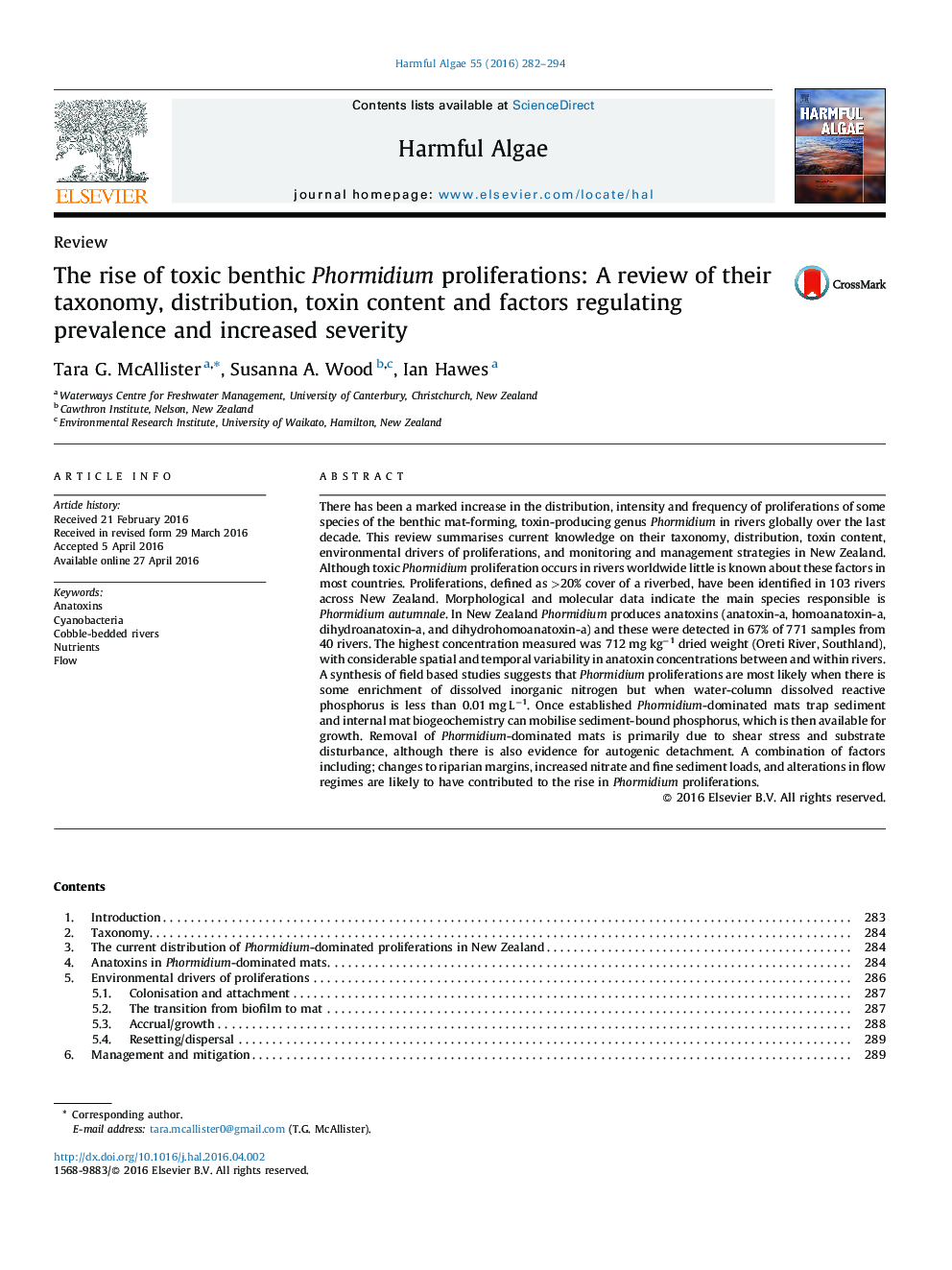| کد مقاله | کد نشریه | سال انتشار | مقاله انگلیسی | نسخه تمام متن |
|---|---|---|---|---|
| 4545150 | 1626916 | 2016 | 13 صفحه PDF | دانلود رایگان |
• Toxic Phormidium proliferations have become more prevalent in rivers globally.
• We review taxonomy, distribution, toxin content and drivers of proliferations.
• In New Zealand there has been an increase in severity and extent of proliferations.
• Alterations in nitrate and flow are likely to have contributed to this increase.
• This review will assist other countries monitor and manage proliferations.
There has been a marked increase in the distribution, intensity and frequency of proliferations of some species of the benthic mat-forming, toxin-producing genus Phormidium in rivers globally over the last decade. This review summarises current knowledge on their taxonomy, distribution, toxin content, environmental drivers of proliferations, and monitoring and management strategies in New Zealand. Although toxic Phormidium proliferation occurs in rivers worldwide little is known about these factors in most countries. Proliferations, defined as >20% cover of a riverbed, have been identified in 103 rivers across New Zealand. Morphological and molecular data indicate the main species responsible is Phormidium autumnale. In New Zealand Phormidium produces anatoxins (anatoxin-a, homoanatoxin-a, dihydroanatoxin-a, and dihydrohomoanatoxin-a) and these were detected in 67% of 771 samples from 40 rivers. The highest concentration measured was 712 mg kg−1 dried weight (Oreti River, Southland), with considerable spatial and temporal variability in anatoxin concentrations between and within rivers. A synthesis of field based studies suggests that Phormidium proliferations are most likely when there is some enrichment of dissolved inorganic nitrogen but when water-column dissolved reactive phosphorus is less than 0.01 mg L−1. Once established Phormidium-dominated mats trap sediment and internal mat biogeochemistry can mobilise sediment-bound phosphorus, which is then available for growth. Removal of Phormidium-dominated mats is primarily due to shear stress and substrate disturbance, although there is also evidence for autogenic detachment. A combination of factors including; changes to riparian margins, increased nitrate and fine sediment loads, and alterations in flow regimes are likely to have contributed to the rise in Phormidium proliferations.
Journal: Harmful Algae - Volume 55, May 2016, Pages 282–294
